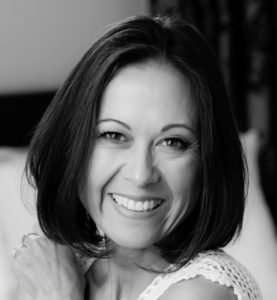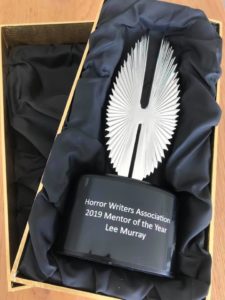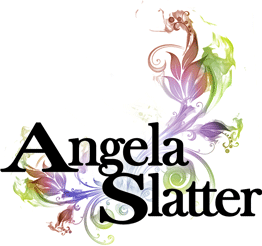 1. What do new readers need to know about Lee Murray?
1. What do new readers need to know about Lee Murray?
I’m a New Zealand writer and editor of speculative fiction for children and adults. I also write the occasional essay, review, and blogpost. Newsletters: almost never. If I write a shopping list, I’ll probably forget to bring it to the store. As an editor, I tend to do my best editing after I press send. Also, whereas the human body typically comprises 60% water, I am 60% cheese.
2. What was the inspiration for Into the Ashes?
Well, to start with, I needed to finish the series! Not only did I have a contract to fulfil, people, myself included, were hanging out to see what would happen between Taine and Jules, and whether Temera would regain his gift for seeing. However, the inspiration for this particular story came entirely from the New Zealand landscape. I was on a road trip with my son and husband, passing through the central plateau on a spectacularly clear day, and I remember thinking the region would make the perfect backdrop for the last book in the series. There were the mountains, the lakes, the army training grounds, and all the wonderful local legends and mythology associated with the area. Add to that, there’s the Taup? supervolcano, and our fear of ‘the big one’: a massive volcanic-earthquake event (New Zealand is sometimes referred to as ‘the shaky isles’ since we’re located on the Pacific Ring of Fire). So, in general, New Zealand’s geography is a wonderful source of story, and New Zealand storytellers have only begun to scratch the surface of what is possible. I think if we imbue our stories with our history and culture, throw in the call of the k?kako and the whims of our gods, then there is a point of difference, something unique that doesn’t appear in other literature. As a New Zealand writer, I feel there is a responsibility for us to tell our stories, to offer our perspectives in this moment, and our landscape is essential to that viewpoint. Then, on that same road trip, my son said, “Mum, you should call your book Into the Ashes.” And that’s how the book came about.
3. And as a broader question, what was the inspiration for the series (Into the Mist and Into the Sounds)? 
The idea for the first book, Into the Mist, came to me while I was out running in the New Zealand bush. Before sustaining an injury, I used to run marathons—completing 25 marathons and a couple of ultramarathons—which meant a lot of time running on trails. While the terrain can be dangerous, and the weather conditions can change rapidly, running in the New Zealand bush doesn’t offer up a lot of beasties. There are no mountain lions, no snakes and no grumpy bears. Probably, the worst thing a runner is likely to come across down here is a w?t? or two, or maybe a swarm of wasps. Out on the road, you might meet a stray pig dog, or a herd of cows on the way to milking, but I’ve never encountered anything on a bush trail. I was discussing this with some girlfriends while out on a trail for a long run once, and it occurred to me ‘what if there was something?’ and ‘what might that be?’ and the idea evolved from there. I went home and immediately opened a file which I optimistically called “Global Blockbuster” and that was how the series came about.
4. What draws you to the darker side of fiction?
I’ve always enjoyed reading dark fiction, but it was a real-life horror that called me to write it. My third book is a not-very-well-known YA novel called Misplaced, which is based on the disappearance of my dear friend, Florence, an artist and mother of three who went missing in France seventeen years ago and who has never been found. I wanted to address how a family might cope with that terrifying, paralysing reality. It is perhaps my most horrific work to date, and yet the only blood in it is a grazed knee. This is because horror operates on our basest fears, not just our universal instinct to avoid disembowelling by rampaging prehistoric monsters, but also those everyday anxieties, the little things that make us uncomfortable, the things that leave us with a “lingering disquiet”, to borrow Ramsey Campbell’s words. With Misplaced, I’d hoped to push back my runaway fears about what might have happened to my lovely friend; I’d hoped for a closure of sorts. As YA writer Alexander Gordon Smith says, “Something weird happens when you write about your worst fears, even if you’re writing fiction. They stop being these unfathomably, impossibly huge things that hide in the shadowy corners of your mind. They become words, they become concrete—or, at least, paper. They lose some of their power, because when they’re laid down like that then you have the control.”
5. You’ve been co-writing with Dan Rabarts for a while now – how did you guys find each other?
Oh, I’d noted Dan lurking in shadowy dark fiction corners of the interweb for a while, and when he put a call out for a writing exercise group, I joined up. The exercise in question involved writing a flash fiction piece based on a reddit thread about the creepy things kids say. Around thirty writers undertook to complete the task, some emerging and some established, who then swapped the stories between them for critique. And then someone said, “Hey, we should publish these.” Someone else suggested a children’s charity. And since I had some experience editing, Dan and I joined forces to co-edit Baby Teeth: Bite-Sized Tales of Terror. The book won us the Sir Julius Vogel Award for Best Collected Work and the Australian Shadows Award for Best Edited Work, as well as a whole heap of wonderful writer colleagues who make up the backbone of our New Zealand speculative community. By then, Dan and I had established a great working relationship, so when readers and friends started clamouring for another anthology, maybe with a mix of Aussie and Kiwi authors, we jumped in again to curate and co-edit At the Edge, which of course, includes a lovely foreword by you. Since then Dan and I have co-authored, co-presented, co-judged, and co-convened various literary projects. We also share joint custody of a couple of writing awards.
6. What’s your process for co-writing?
It varies depending on my co-writer. Most of my collaborative experience has been writing the Path of Ra, a Kiwi supernatural crime-noir series, with my Wellington co-author Dan Rabarts. Here’s a little excerpt from Teeth of the Wolf, the second book in the series, which features brother and sister protagonists, Matiu and Penny Yee. This excerpt sums up our collaborative process:
“What happened to my kitchen?”
“I had another toastie.”
“So I see.”
“Don’t start, Pen. It’s only a bit messy.”
“Well, clean it up, then.”
“Can’t. It’s a Friday. You know very well it’s not my dishes night.”
Penny rolls her eyes. “Don’t give me that. That roster was defunct years ago.”
“Can you do it? Please?” He pulls the puppy-dog face he used to make when he was trying to get out of the dishes back when they were kids.
Penny snorts. “Why should I?”
“Because I’m trying to work out where Touching the Sun have hidden Charlotte,” he says, immediately making her feel like shit.
Our writing collaboration is exactly like this bickering-yet-affectionate banter that goes on between the sibling characters in our books. When we embarked on our first collaborative novella-that-got-out-of-hand, we decided to use elements from our own lives to inform the narrative. I called on my science background and Chinese heritage to create stickler-for-rules science-consult Penny Yee; and Dan delved into his M?ori background, his job in security and his drama degree to conjure Penny’s adopted brother, Matiu, a matakite (seer) who walks with one foot in the shadowy underworld. We also made use of the quasi-brother-sister relationship that we’d previously established as editor-curators on the anthology projects I mentioned. I have two little brothers, so one more wasn’t a problem, and Dan has two older sisters. The result is a he-said she-said narrative where the two protagonists have to put aside their opposing ideologies and combined family baggage to solve a dark mystery. Just as Penny and Matiu discuss potential leads, sift through them, and follow the most promising among them, Dan and I sift and discard story threads, elaborating on those which best serve the story. However, Matiu and Dan have a dire tendency to lead the narrative down dark alleys, on desperate car chases, or into unexpectedly explosive situations, and it will be up to Penny and Lee to write those pesky little brothers back into line. The final book in the series Blood of the Sun will be released later this year.
 7. You were recently awarded the Mentor of the Year Award by the Horror Writers’ Association. How do you approach the mentor-mentee relationship?
7. You were recently awarded the Mentor of the Year Award by the Horror Writers’ Association. How do you approach the mentor-mentee relationship?
Thank you. It’s a huge honour to be recognised by the HWA for my work with emerging authors. In terms of an approach, since everyone’s process and pace are different, I usually let my mentees guide how we proceed. A lot of the success of any mentor-mentee relationship depends on developing an initial rapport, and in this regard the mentorship convenor has a lot of influence, pairing up people and projects on a best-fit basis. And that means understanding the relative skills and preferences of mentors and matching those to the mentees and their specific projects. It’s a tricky task. Once a mentee has been allocated to me, there’s the usual email introductions and exchange of contact details. Then I’ll start by reading an excerpt of the material, the synopsis, and any concerns / niggles the writer might have about the work in question—usually the reason the writer has requested the mentorship in the first place. I like to write a report (around 8-10 pages) based on that cold-read, and I might also mark up the manuscript with comments and suggestions, so the writer has something to refer to as they revise their work. After that, I’ll schedule an online meeting or phone call with the writer and we’ll get to know each other, discuss the work in hand, and determine a plan to progress the work which fits in with the writer’s own process. In general, I find mentees are willing to work especially hard to make the most of the opportunity; it’s an absolute pleasure and a privilege to be party to the author’s excitement when they see their work progress.
8. Who’s your favourite villain in fiction?
Hmm. Nurse Ratchet. Lady Macbeth. Austen’s Emma. Mr Rochester. Prince Charming. (Not from fiction but does anyone remember that Witchy-Poo from HR Puff ‘n’ Stuff used to scare me to nightmares as a kid.)
9. Who are your main literary influences?
Growing up, I believe mine was a very traditional GenX reading list for lovers of speculative fiction: Barrie, Tolkien, Lewis, Butler, Wyndham, Le Guin, Camus. I also loved Harper Lee, Rene Barjavel, Bernard Werber. However, as a writer, I’m not trying to copy anyone’s style, but rather to write the stories that resonate for me, hopefully with believable characters using authentic voices. On the other hand, there are definitely some writers I do try to emulate for their kindness and generosity and for their service to the writing community: people like Linda Addison, Jonathan Maberry, Rena Mason, Kaaron Warren…
10. What’s next for Lee Murray?
Thank you for asking! As well as the latest book in the Path of Ra series, Blood of the Sun, which I mentioned earlier and which will be released by our US publisher Raw Dog Screaming Press later this year, I also have a number of other publications slated for release in the coming months. The first of these is Grotesque: Monster Stories, my debut collection, coming in July 2020. I’m not particularly well known as a short story writer, so I’m hugely excited about sharing this book with everyone. Here is the blurb:
Three-time Bram Stoker Award® nominee Lee Murray delivers her debut collection, and it is monstrous. Inspired by the mythology of Europe, China, and her beloved Aotearoa-New Zealand, Murray twists and subverts ancient themes, stitching new creatures from blood and bone, hiding them in soft forest mists and dark subterranean prisons. In this volume, construction workers uncover a hidden tunnel, soldiers wander, lost after a skirmish, and a dead girl yearns for company. Featuring eleven uncanny tales of automatons, zombies, golems, and dragons, and including the Taine McKenna adventure Into the Clouded Sky, Grotesque: Monster Stories breathes new life into the monster genre.
I’m also curating an anthology of scary flash fiction and poetry by New Zealand secondary school students, coming in June. Called Scary Tales, the anthology is an annual project run by Young New Zealand Writers aimed at developing a love of speculative fiction and writing among New Zealand youth. What is especially scary is just how much talent is coming through the ranks—I’m going to have to get my game on. And finally, I’m thrilled to be co-editing an anthology of dark fiction tales by Asian women writing in English along with Australian editor Geneve Flynn. Black Cranes will be published by Omnium Gatherum in late 2020. Contributors include Nadia Bulkin, Grace Chan, Rin Chupeco, Gabriela Lee, Rena Mason, Angela Yuriko Smith, Christina Sng; and Alma Katsu, author of The Deep, will write the foreword. I feel strongly that this book is long overdue and especially important in the current climate. The cover blurb reads:
Almond-eyed celestial, the filial daughter, the perfect wife. Quiet, submissive, demure. In Black Cranes, Asian women of horror both embrace and reject these traditional roles in a unique collection of dim sum stories which dissect their experiences of ‘otherness’, be it in the colour of their skin, the angle of their cheekbones, the things they dare to write, or the places they have made for themselves in the world. Black Cranes is a dark and intimate exploration of what it is to be a perpetual outsider.
Bio:
Lee Murray is a multi-award-winning writer and editor of science fiction, fantasy, and horror (Sir Julius Vogel, Australian Shadows) and a three-time Bram Stoker Award® nominee. Her works include the Taine McKenna military thrillers, and supernatural crime-noir series The Path of Ra, co-written with Dan Rabarts, as well as several books for children. She is proud to have edited thirteen speculative works, including award-winning titles Baby Teeth: Bite Sized Tales of Terror and At the Edge (with Dan Rabarts), Te K?rero Ahi K? (with Grace Bridges and Aaron Compton) and Hellhole: An Anthology of Subterranean Terror. She is the co-founder of Young New Zealand Writers, an organisation providing development and publishing opportunities for New Zealand school students, co-founder of the Wright-Murray Residency for Speculative Fiction Writers, and HWA Mentor of the Year for 2019. In February 2020, Lee was made an Honorary Literary Fellow in the New Zealand Society of Authors Waitangi Day Honours. Lee lives over the hill from Hobbiton in New Zealand’s sunny Bay of Plenty where she dreams up stories from her office overlooking a cow paddock. Read more at www.leemurray.info. She tweets @leemurraywriter
Links:

